|
Books Should Be Free Loyal Books Free Public Domain Audiobooks & eBook Downloads |
|
|
Books Should Be Free Loyal Books Free Public Domain Audiobooks & eBook Downloads |
|
Historical Fiction |
|---|
Book type:
Sort by:
View by:
|
By: Susan Edmonstoune Ferrier | |
|---|---|
 Marriage, Volume 1
Marriage, Volume 1
“Love!–A word by superstition thought a God; by use turned to an humour; by self-will made a flattering madness.” – Alexander and Campaspe. Lady Juliana, the indulged and coddled seventeen (”And a half, papa”) year old daughter of the Earl of Cortland, is betrothed by her father to a wealthy old Duke who can give her every luxury. She instead runs away and marries her very handsome but penniless lover. Very soon, they are forced to travel to Scotland to live with his quirky family in a rundown “castle” in the barren wilderness. Can this marriage survive?(Summary by P.Cunningham) | |
By: Théophile Gautier (1811-1872) | |
|---|---|
 Romance of a Mummy and Egypt
Romance of a Mummy and Egypt
MANUAL OF SURGERY, OXFORD MEDICAL PUBLICATIONSBY ALEXIS THOMSON, F.R.C.S.Ed.PREFACE TO SIXTH EDITION Much has happened since this Manual was last revised, and many surgical lessons have been learned in the hard school of war. Some may yet have to be unlearned, and others have but little bearing on the problems presented to the civilian surgeon. Save in its broadest principles, the surgery of warfare is a thing apart from the general surgery of civil life, and the exhaustive literature now available on every aspect of it makes it unnecessary that it should receive detailed consideration in a manual for students... | |
By: Thomas A. Janvier (1849-1913) | |
|---|---|
 The Aztec Treasure-House
The Aztec Treasure-House
| |
By: Thomas Dixon (1864-1946) | |
|---|---|
 The Victim A romance of the Real Jefferson Davis
The Victim A romance of the Real Jefferson Davis
| |
By: Thomas Dixon, Jr. (1864-1946) | |
|---|---|
 Clansman, An Historical Romance of the Ku Klux Klan
Clansman, An Historical Romance of the Ku Klux Klan
The second book in a trilogy of the Reconstruction era - The Leopard's Spots (1902), The Clansman (1905), and The Traitor (1907), this novel was the basis for the 1915 silent movie classic, "The Birth Of A Nation". Within a fictional story, it records Dixon's understanding of the origins of the first Ku Klux Klan (his uncle was a Grand Titan during Dixon's childhood), recounting why white southerners' began staging vigilante responses to the savage personal insults, political injustices and social cruelties heaped upon them during Reconstruction... | |
By: Thomas Hardy (1840-1928) | |
|---|---|
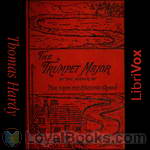 The Trumpet-Major
The Trumpet-Major
Our heroine, Anne Garland, lives quietly in a rural community deep in the English countryside. However, the arrival of several regiments preparing for an expected invasion brings colour and chaos to the county. A graceful and charming young woman, Anne is pursued by three suitors: John Loveday, the trumpet-major in a British regiment, honest and loyal; his brother Robert, a merchant seaman and womaniser, and Festus Derriman, the cowardly son of the local squire. Set at the time of the Napoleonic wars, this is the author’s only historical novel, and unusually for Hardy’s stories, most of the characters live happily ever after. | |
 Group of Noble Dames
Group of Noble Dames
The pedigrees of our county families, arranged in diagrams on the pages of county histories, mostly appear at first sight to be as barren of any touch of nature as a table of logarithms. But given a clue—the faintest tradition of what went on behind the scenes, and this dryness as of dust may be transformed into a palpitating drama. Out of such pedigrees and supplementary material most of the following stories have arisen and taken shape. | |
By: Thomas Love Peacock (1785-1866) | |
|---|---|
 Maid Marian
Maid Marian
| |
By: Thomas Wallace Knox (1835-1896) | |
|---|---|
 Captain John Crane, 1800 - 1815
Captain John Crane, 1800 - 1815
John and David grew up best of friends, outgoing and full of adventure. Living but miles from the sea west of Boston, right on the cusp of manhood at the end of America’s Revolutionary war, the ocean’s siren song beckoned to both. At the peak of adolescence, they struck out on foot in pursuit of their shared dream. Two days to Boston and only one day there found them aboard ship for a whirlwind of adventure beyond their wildest dreams. The next fifteen years shaped a future for the fledgling mariners that seems spun as a flaxen yarn --- were it not so historically accurate. - Summary by Tom Hirsch | |
By: Tom Bevan (1868-) | |
|---|---|
 Sea-Dogs All! A Tale of Forest and Sea
Sea-Dogs All! A Tale of Forest and Sea
| |
By: Torquato Tasso (1544-1595) | |
|---|---|
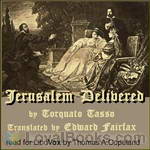 Jerusalem Delivered
Jerusalem Delivered
The First Crusade provides the backdrop for a rich tapestry of political machinations, military conflicts, martial rivalries, and love stories, some of which are complicated by differences in religion. The supernatural plays a major role in the action. Partly on this account, and partly because of the multilayered, intertwined plots, the poem met with considerable contemporary criticism, so Tasso revised it radically and published the revision under a new name, La Gerusalemme Conquistata, or "Jerusalem Conquered," which has remained virtually unread, a warning to authors who pay attention to the critics... | |
By: Trollope, Anthony (1815-1882) | |
|---|---|
 Belton Estate, The
Belton Estate, The
Clara Amedroz is the virtuous, intelligent, and quick-witted heroine of this novel. Like all women of her time, she has few options other than to marry. She is lucky enough to have two eligible suitors, and chooses the more urbane and worldly of the two. Alas, however, she realizes fairly quickly that Captain Aylmer is not a nice person. Throughout much of the novel we find her trying hard not to recognize that Will Belton - the suitor she rejected, and who still loves and wants to marry her - is... | |
By: Upton Sinclair (1878-1968) | |
|---|---|
 A Prisoner of Morro
A Prisoner of Morro
Upton Sinclair, born in 1878 was a Pulitzer Prize-winning American author. He wrote over 90 books in many genres. Best known for his muckraking novel, The Jungle, Sinclair also wrote adventure fiction. Many of these works were written under the pseudonym, Ensign Clark Fitch, U.S.N. A Prisoner of Morrow, published in 1898 when Sinclair was but 20 years old, is one of these efforts. The period for this work is the ten-week Spanish–American War which occurred in 1898. Revolts against Spanish rule had been prevalent for decades in Cuba and were closely watched by Americans... | |
By: Vicente Blasco Ibáñez (1867-1928) | |
|---|---|
 Four Horsemen of the Apocalypse
Four Horsemen of the Apocalypse
The Four Horsemen of the Apocalypse, by Vicente Blasco Ibañez and translated into English by Charlotte Brewster Jordan, depicts two branches of a family with its roots in the pampas of Argentina. The wealthy Argentinian, Julio Madariaga, comes from Spain and raises himself from poverty, becoming a self-made, wealthy cattleman. He is a man of extremes; an honest man with a rascally knack for taking advantage of others; a self-made man with overweening pride, prejudices, and a sharp, flinty temper that can spark into violence, he is at the same time given to great generosity toward those who are under him... | |
By: Victor Hugo (1802-1885) | |
|---|---|
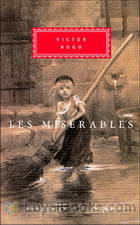 Les Misérables
Les Misérables
Victor Hugo's Les Misérables is a novel which tells the story of ex-convict Jean Valjean, his struggles and eventual redemption. It's hailed by many critics as not just Victor Hugo's finest work but also one of the best French novels of all time. Like most epic novels written in the 19th century, the storyline of Les Misérables spans through several decades beginning in the early 1800s and culminating in the 1832 June Rebellion in Paris. The events related to the lives of the central characters in the novel are also tied to the great historical events of the time from the French Revolution to the June Rebellion... | |
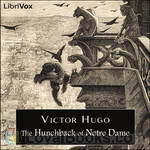 The Hunchback of Notre Dame
The Hunchback of Notre Dame
One of the great literary tragedies of all time, The Hunchback of Notre Dame features some of the most well-known characters in all of fiction - Quasimodo, the hideously deformed bellringer of Notre-Dame de Paris, his master the evil priest Claude Frollo, and Esmeralda, the beautiful gypsy condemned for a crime she did not commit. | |
 Ninety-Three
Ninety-Three
1793. The new revolutionary government of France is laboring mightily to end injustice and bring in an ideal new age of liberty, equality, and brotherhood, beginning by killing those obnoxious persons who don't appreciate their ideals. In Vendée a force of peasants, strongly supported by imperial England, is laboring mightily to overthrow the revolutionary government and restore Christianity, family, honor and decency, beginning by killing those obnoxious persons who fail to appreciate those noble phenomena... | |
By: Violet Jacob (1863-1946) | |
|---|---|
 Flemington
Flemington
This adventure historical fiction novel is set in Angus, Scotland during the Jacobite rebellion of 1745. It has all the elements of a good war novel: spies, betrayals, politics, and even a love story . This is a smart novel with wise insights into human nature, the different choices people make during a conflict, and the coping mechanisms of those who were left behind. This novel will make you laugh, cry, and fall in love with the landscape of Scotland. - Summary by Stav Nisser. | |
By: W. D. (William Douw) Lighthall (1857-1954) | |
|---|---|
 The False Chevalier or, The Lifeguard of Marie Antoinette
The False Chevalier or, The Lifeguard of Marie Antoinette
| |
By: Walter Pater (1839-1896) | |
|---|---|
 Marius the Epicurean
Marius the Epicurean
Marius the Epicurean is a philosophical novel written by Walter Pater, published in 1885. In it Pater displays, with fullness and elaboration, his ideal of the aesthetic life, his cult of beauty as opposed to bare asceticism, and his theory of the stimulating effect of the pursuit of beauty as an ideal of its own. The principles of what would be known as the Aesthetic movement were partly traceable to this book; and its impact was particularly felt on one of the movement’s leading proponents, Oscar Wilde, a former student of Pater at Oxford. | |
By: Walter Scott (1771-1832) | |
|---|---|
 St. Ronan's Well
St. Ronan's Well
| |
By: Washington Irving (1783-1859) | |
|---|---|
 Old Christmas: From the Sketch Book of Washington Irving
Old Christmas: From the Sketch Book of Washington Irving
Washington Irving's Old Christmas tells of an American's travels through England during the Christmas season. Through a chance meeting with an old friend he is able to experience Christmas in a stately manor house. Through his eyes as a houseguest he glimpses the uniquely British customs and celebrations of Christmas as it would have been experienced during the Middle Ages, rather than in the early 19th century. | |
By: Willa Cather (1873-1947) | |
|---|---|
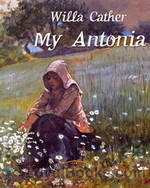 My Antonia
My Antonia
Two young children arrive in a small frontier settlement on the wild and desolate plains of Nebraska, on the same day and by the same train. Jim Burden is a ten year old orphan from Virginia who has come to live with his grandparents, while Antonia Shimerda who's the same age as Jim, arrives with her large, immigrant family from Eastern Europe to try and eke out a living in the New World. The children find themselves thrown together as they live in adjoining farms. Jim tutors Antonia in English and they become good friends as they grow up... | |
By: William Platt | |
|---|---|
 Stories of the Scottish Border
Stories of the Scottish Border
Nothing seems to be known about Mr and Mrs William Platt, the writers of Stories of the Scottish Border. What they produced is an eccentric guidebook and history, seen partly through the ballads of the region. The book recounts the military stratagems, treachery and courage of those who struggled for control of the Border lands and of the whole country, and tells of the triumphs or tragic fate of those who took part on both sides. It also tells us stories of the Border Reivers, raiders who lived by riding out and stealing their neighbours’ livestock... | |
By: William Carleton (1794-1869) | |
|---|---|
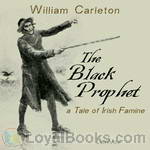 The Black Prophet - A Tale of Irish Famine
The Black Prophet - A Tale of Irish Famine
A story about the Irish, just before the onset of the famine of 1847, with all the color and dialogue of a man who lived it. | |
By: William Dean Howells (1837-1920) | |
|---|---|
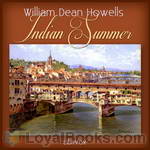 Indian Summer
Indian Summer
In his novel Indian Summer, William Dean Howells presents a mellow but realistic story that has the complete feel of that delightful time of the year, although the plot actually spans several seasons. The Indian summer aspect applies to a sophisticated gentleman, Theodore Colville, who has just entered his middle years as he returns to a scene, Florence, Italy, that played an important part in his early manhood. It was here twenty years earlier that he first fell in love, seemingly successfully until a sudden and harsh rejection... | |
By: William Harrison Ainsworth (1805-1882) | |
|---|---|
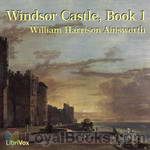 Windsor Castle, Book 1
Windsor Castle, Book 1
Book 1 - Ann Boleyn. The focus of the novels is on the events surrounding Henry VIII's replacing Catherine of Aragon with Anne Boleyn as his wife. During Henry's pursuit of Boleyn, the novel describes other couples, including the Earl of Surrey and Lady Elizabeth Fitzgerald, a match Henry does not support. However, some of the individuals oppose Henry and his desires for Boleyn, including Thomas Wyat who wants her for himself and Cardinal Wolsey, who uses his own daughter, Mabel Lyndwood, to lure Henry away from Boleyn... | |
By: William Henry Giles Kingston (1814-1880) | |
|---|---|
 A True Hero A Story of the Days of William Penn
A True Hero A Story of the Days of William Penn
| |
By: William Henry Shelton (1840-1932) | |
|---|---|
 Last Three Soldiers
Last Three Soldiers
What if the Confederacy had won the American Civil War? It’s July 1864 and three oh-so-young Union troopers are assigned to a mountaintop in Tennessee to be a link in a chain of flag signalers across a ridge of mountains. They encounter a dizzying gorge with a rickety bridge, bears, aching heartache, freezing cold, avalanche, bats, skeletons, deserted cabins, puzzling mysteries, starvation, and more. | |
By: William Hope Hodgson (1877-1918) | |
|---|---|
 Boats of the 'Glen Carrig'
Boats of the 'Glen Carrig'
Eighteenth-century sailors adrift in a lifeboat encounter strange lands and weird creatures in their search for home. A creepy tale of nautical adventure. | |
By: William John Locke (1863-1930) | |
|---|---|
 Where Love Is
Where Love Is
Norma Hardacre is a member of smart London society. She finds herself irresistibly drawn to a penniless artist named Jimmie Padgate. However, she gets engaged to Morland King, a wealthy man who sees her as a convenient trophy wife as he furthers his career. Morland is hiding a dark secret. Meanwhile, Jimmie, who is hopelessly in love with Norma, starts to become a rising star - but then his reputation is suddenly smashed . . . - Summary by Simon Evers | |
 Glory of Clementina Wing
Glory of Clementina Wing
The book follows the adventures of two main characters - Clementina Wing, a talented artist in her mid 30's with no social graces and Ephraim Quixtus, an older bookish gentleman whose quiet life is abruptly changed for the worse one day. Although the two know each other, a later surprising event brings them together.- Summary by Simon Evers | |
 Tale of Triona
Tale of Triona
Olivia is a newly orphaned young woman looking for adventure and excitement. She rents out her house to Blaise Olifant whose friend Alexis Triona soon moves in to stay with him. Olivia moves to London and enjoys life in London society before she meets Triona again. Triona writes a book about his rather mysterious past experiences which is an instant bestseller. The book follows their relationship and the strange and totally unexpected path it takes. | |
 House of Baltazar
House of Baltazar
Twenty years ago, John Balthazar, a notable and brilliant Cambridge mathematician, left England abruptly as he found himself falling in love with a woman who was not his wife. No one hears from him for 20 years and it's assumed he's dead. He travels to China where he steeps himself in the culture and returns incognito 20 years later with his Chinese pupil, Quong Ho. They live in a remote farmhouse where he stays in blissful ignorance of the events of the First World War until a German zeppelin crashes nearby and blows up his house... | |
By: William MacLeod Raine (1871-1954) | |
|---|---|
 A Daughter of Raasay A Tale of the '45
A Daughter of Raasay A Tale of the '45
| |
By: William Makepeace Thackeray | |
|---|---|
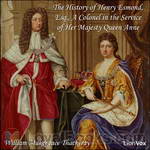 The History of Henry Esmond, Esq., A Colonel in the Service of Her Majesty Queen Anne
The History of Henry Esmond, Esq., A Colonel in the Service of Her Majesty Queen Anne
A classic Victorian novel and a historical novel rolled into one! Read about court and army life during the reign of Queen Anne – a story of Catholic – Protestant intrigue, and the party which aspired to the restoration of Bonny Prince Charlie. And, a good love story as well. | |
 Virginians
Virginians
It tells the story of Henry Esmond's twin grandsons, George and Henry Warrington. Henry's romantic entanglements with an older woman lead up to his taking a commission in the British army and fighting under the command of General Wolfe at the capture of Quebec. On the outbreak of the American War of Independence he takes the revolutionary side. George, who is also a British officer, thereupon resigns his commission rather than take up arms against his brother. | |
By: William Morris (1834-1896) | |
|---|---|
 The House of the Wolfings
The House of the Wolfings
William Morris (1834-1896) was a writer, illustrator and medievalist from the Romantic period and associated with other renowned authors of the time such as Dante Rossetti. His fascination with ancient Germanic and Norse people dominated his writings, the first to be set in an entirely invented fantasy world and which helped to establish the fantasy genre. The House of Wolfings (1890), some argue, is a demonstration of Morris' socialism as the society described, though not an utopia, is clan-based, elects leaders and makes decisions in clan tribal meetings... | |
 A Dream of John Ball; and, a king's lesson
A Dream of John Ball; and, a king's lesson
| |
By: William Shakespeare (1564-1616) | |
|---|---|
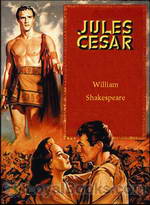 Julius Caesar
Julius Caesar
Though it's titled The Tragedy of Julius Caesar, the man himself appears only in five scenes in the entire play! However, such is his impact on the events that surrounded him that he still remains the central figure in this psychological drama that combines politics, honor, assassination, betrayal, the lust for power, patriotism and friendship. Set in 44 BC in ancient Rome, it is one of William Shakespeare's early Tragedies. First thought to have been performed in September 1599, William Shakespeare's original text or script have long vanished... | |
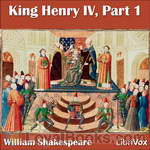 King Henry IV
King Henry IV
King Henry IV, Part 1 is the second of Shakespeare’s eight Wars of the Roses history plays, with events following those of King Richard II. As the play opens, King Henry IV (formerly Henry Bolingbroke) and Henry Percy (Hotspur) argue over the disposition of prisoners from the Battle of Holmedon. The King’s attitude toward Mortimer and the Percy family prompts them to plot rebellion. In the meantime, his son Prince Hal is living the low life in the company of Sir John Falstaff. As the time of battle nears, Prince Hal joins his father and is given a high command... | |
 Antony and Cleopatra
Antony and Cleopatra
Antony and Cleopatra is a tragedy by William Shakespeare, believed to have been written sometime between 1603 and 1607. It was first printed in the First Folio of 1623. The plot is based on Thomas North's translation of Plutarch's Life of Marcus Antonius and follows the relationship between Cleopatra and Mark Antony from the time of the Parthian War to Cleopatra's suicide. The major antagonist is Octavius Caesar, one of Antony's fellow triumviri and the future first emperor of Rome. The tragedy is a Roman play characterized by swift, panoramic shifts in geographical locations and in registers, alternating between sensual, imaginative Alexandria and the more pragmatic, austere Rome. | |
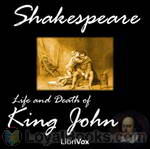 King John
King John
The Life and Death of King John, a history play by William Shakespeare, dramatises the reign of John, King of England (ruled 1199–1216), son of Henry II of England and Eleanor of Aquitaine and father of Henry III of England. It is believed to have been written in the mid-1590s but was not published until it appeared in the First Folio in 1623. John (24 December 1166 – 19 October 1216), also known as John Lackland or Softsword, was King of England from 6 April 1199 until his death. His reign... | |
 Reign of King Edward the Third
Reign of King Edward the Third
| |
By: William Ware (1797-1852) | |
|---|---|
 Aurelian or, Rome in the Third Century
Aurelian or, Rome in the Third Century
| |
By: William Wells Brown (1814-1884) | |
|---|---|
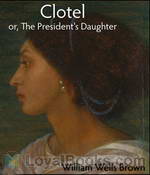 Clotel, or, The President's Daughter
Clotel, or, The President's Daughter
Clotel; or, The President's Daughter is a novel by William Wells Brown (1815-84), a fugitive from slavery and abolitionist and was published in London, England in December 1853. It is often considered the first African-American novel. This novel focuses on the difficult lives of mulattoes in America and the "degraded and immoral condition of the relation of master and slave in the USA" (Brown). It is about the tragic lives of Currer, Althesea, and Clotel. In the novel, Currer is the former mulatto mistress of President Thomas Jefferson who together have two daughters, Althesea and Clotel... | |
By: Zane Grey (1872-1939) | |
|---|---|
 The Last Trail
The Last Trail
Return with us to those thrilling days of yesteryear as Mike Vendetti narrates this early Zane Grey novel of hardy pioneers taming the wild west. Yes, despite the difficult times, romance flourishes and the bad guys are eliminated almost single handedly as our heroes Jonathan Zane and his sidekick Lew “Deathwind” Wetzel fight their way through mud, blood, gore, savage Indians, and despicable outlaws, to make the land safe for pioneer families as they settle the wild west. | |
 The Last of the Plainsmen
The Last of the Plainsmen
Travel along as Mike Vendetti aka miketheauctioneer narrates an outstanding true account of a trip made in 1909 by Zane Grey and a plainsman, Buffalo Jones, through the Grand Canyon to lasso a cougar. That’s right lasso. Throw a rope around. That’s equivalent to catching one by the tail. As I narrated this book, I found fact to be as exciting as fiction. This part of the west was relatively wild and untamed at this time. Wolves, wild horses, buffalo and other wildlife were quite prevalent, and the Indians were not that friendly... | |
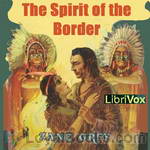 The Spirit of the Border
The Spirit of the Border
This is an early novel by the phenomenally successful author of frontier, western and sports stories. It deals with historical characters and incidents in the Ohio Valley in the late 18th century, especially with the foundation of Gnaddenhutten, a missionary village intended to bring Christianity to the Indians of Ohio, despite the violent opposition of both Indians and white renegades. This turbulent adventure romance features the heroics of a semi-legendary frontiersman, Lewis Wetzel, who attempts to protect the settlers from hostile Native Americans and the vicious white outlaws the Girty brothers. (Introduction by Leonard Wilson) | |
 Betty Zane
Betty Zane
| |